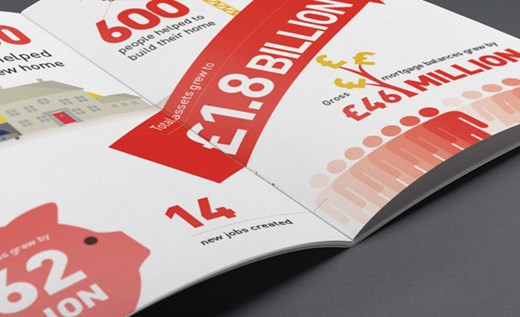The Northern Ireland Housing market sees continued growth in Q2 2025, despite economic headwinds
The Northern Ireland housing market has continued to build momentum through the second quarter of 2025, with modest growth in prices and increased market activity, according to the latest Northern Ireland Quarterly House Price Index (NIQHPI).
The Northern Ireland housing market has continued to build momentum through the second quarter of 2025, with modest growth in prices and increased market activity, according to the latest Northern Ireland Quarterly House Price Index (NIQHPI).
The Northern Ireland housing market has continued to build momentum through the second quarter of 2025, with modest growth in prices and increased market activity, according to the latest Northern Ireland Quarterly House Price Index (NIQHPI).
Prices edge up as confidence holds
The average property price for Q2 2025 stood at £215,713 – a 1.4% increase from the previous quarter and up 2.7% compared to the same period last year. Despite wider economic pressures, buyer and seller confidence appears resilient, helping to sustain steady growth across most regions and housing types.
Signs of increased activity were evident, with more listings, strong bidding interest, and a generally positive market sentiment. More than 70% of estate agents surveyed reported an uplift in activity compared with Q1, and 60% saw a rise in new listings.
Stamp Duty fears fail to stall market
While recent changes to Stamp Duty were expected to slow things down, that hasn’t yet happened. Buyer demand remains buoyant, partly driven by a more competitive mortgage environment. Many lenders are already cutting rates in anticipation of a possible Bank of England interest rate drop later this year, despite policymakers holding off for now as inflation continues to exceed targets.
Challenges ahead
The housing market’s performance is impressive given the economic context. Wage growth slowed to 5% in early 2025, while unemployment rose to 4.7% – the highest level in four years. With inflation sitting at 3.6% in June and employer tax hikes impacting the job market, there’s uncertainty about whether current housing trends will hold.
Property types: Detached homes lead the way
All property types except apartments saw price increases this quarter:
- Detached homes rose by 2.4% quarterly, with an annual rise of 0.3%, bringing the average price to £315,200.
- Terrace/townhouses saw a 1.6% quarterly rise and a 4.3% annual increase, with average prices at £148,930.
- Semi-detached homes grew more modestly by 0.9% quarter-on-quarter and 3.3% annually, now averaging £202,276.
- Apartments saw a 3.8% drop in price from the previous quarter but still posted a 1.4% rise compared to Q2 2024, with an average price of £158,449.
Looking ahead
As the market moves into the second half of 2025, signs point to a cautiously optimistic outlook. Buyer interest remains firm, and pricing appears stable for now. However, pressures from inflation, employment figures, and future fiscal policy changes may influence the pace and direction of the market over the coming months.
Dr Michael McCord, lead researcher and Reader in Valuation, Investment and Finance at Ulster University said:
“The analysis this quarter shows that the average house price stood at £215,713, representing a 2.7% annual increase compared with Q2 2024, and a 1.4% rise from Q1 2025. This reflects a continuation of the steady upward trend observed since mid-2024. Market sentiment remains high with the housing market displaying growing optimism amongst buyers, increased bidding and consumer activity.
“Whilst some caution exists, particularly in relation to the Bank of England’s Monetary Policy Committee decision to hold interest rates, there looks the likelihood that interest rates will see a cut over the second half of 2025, and ultimately increased lender competition. Some headwinds persist – notably the slowdown of annual pay growth and an increase in unemployment rates, however these remain to be seen and the market looks to remain settled and buoyant.”
Ursula McAnulty, Head of Research at the Northern Ireland Housing Executive, which commissions the research, said:
“In the second quarter of 2025, the analysis continues to suggest a buoyant market, with consumer confidence strong, market listings and completions up, and ongoing price stability. We had expected that the recent changes in Stamp Duty might slow the market a little, but there’s no evidence of any real impact, at least in the second quarter.
“Agents remain largely positive about market sentiment, with several agents pointing to competition among mortgage lenders and the potential for interest rate base cuts as key tailwinds for the market, anticipating that these factors could sustain the continued market over the next two quarters.”
Michael Boyd, Chief Executive of Progressive Building Society said:
“As we move into the second half of 2025, the Northern Ireland housing market continues to show resilience, with steady price growth and increasing activity across key segments. Improved mortgage conditions, particularly the increasing number of mortgage products being offered, have opened up opportunities for buyers and helped sustain demand.
“Agent sentiment remains broadly positive and we are seeing increased market activity and completions as well as ongoing price stability. “Nonetheless, persistent economic pressures, including rising unemployment and slower wage growth, are creating some headwinds that we will be monitoring closely. “Overall, the market remains in a stable position, but the balance of the year will be critical in determining the pace and durability of progress.”

Speak to our team today
We’d love to talk you through the mortgage process and help you find a suitable product. For more information or to apply for an account, you can call us, email us, pop into one of our 11 branches. We look forward to hearing from you.



